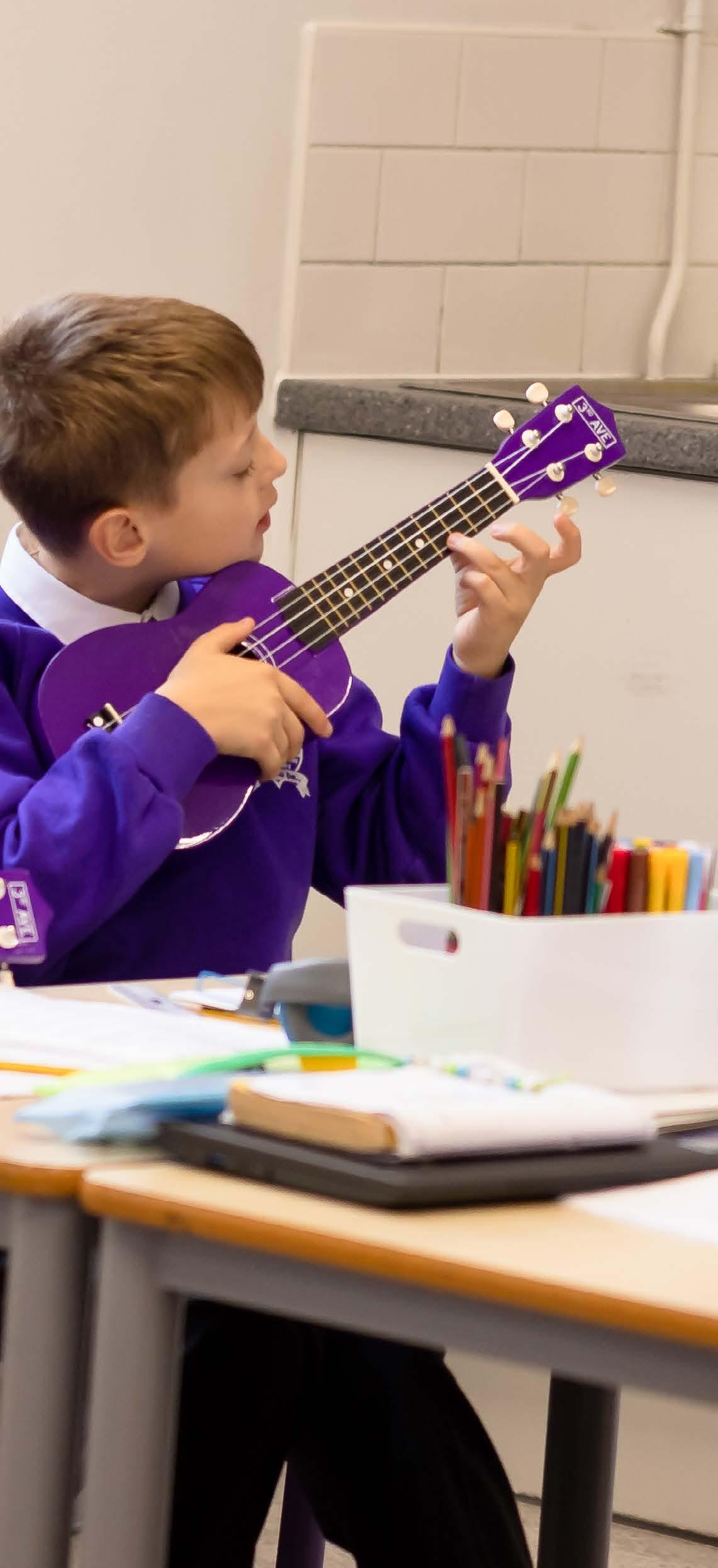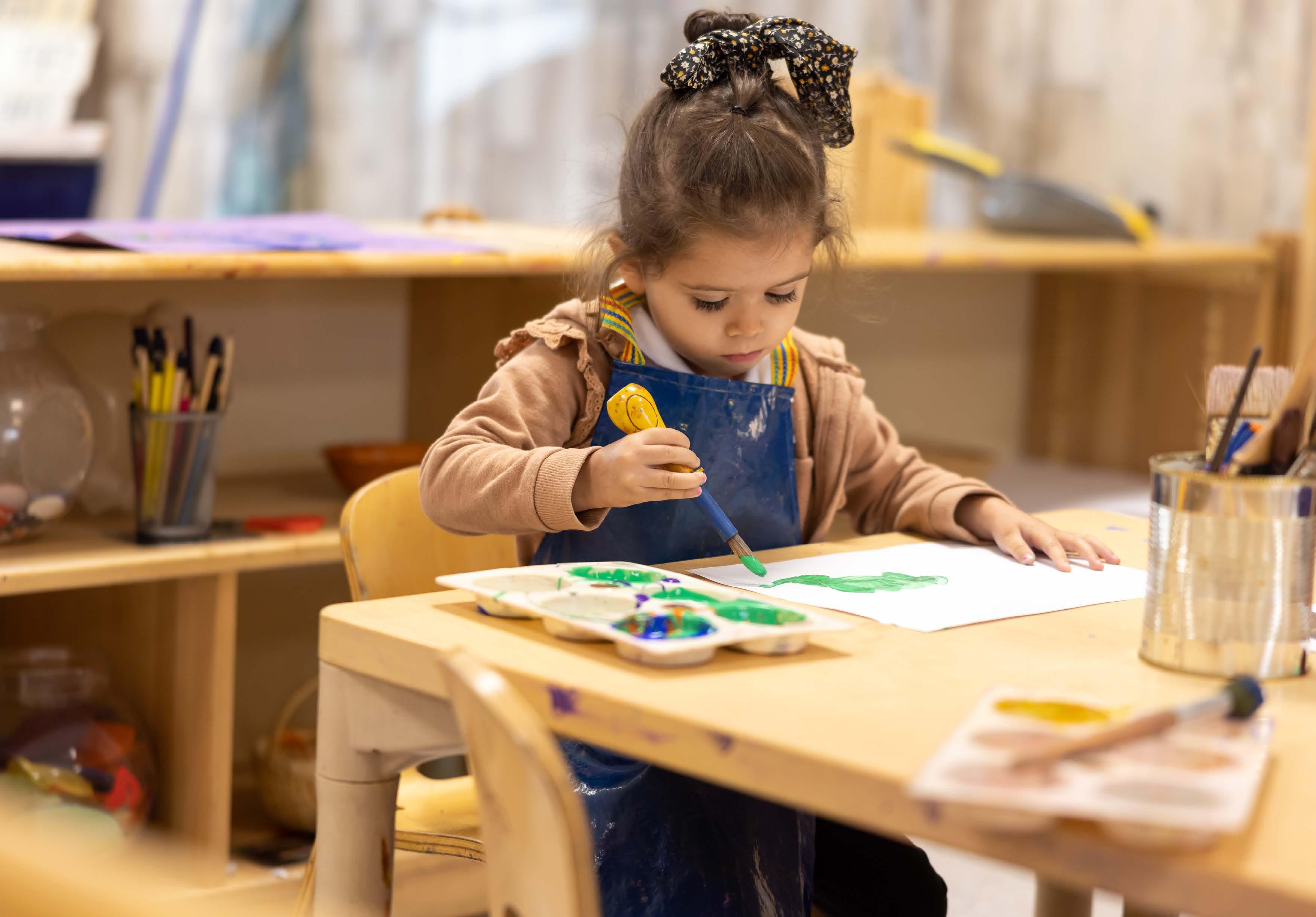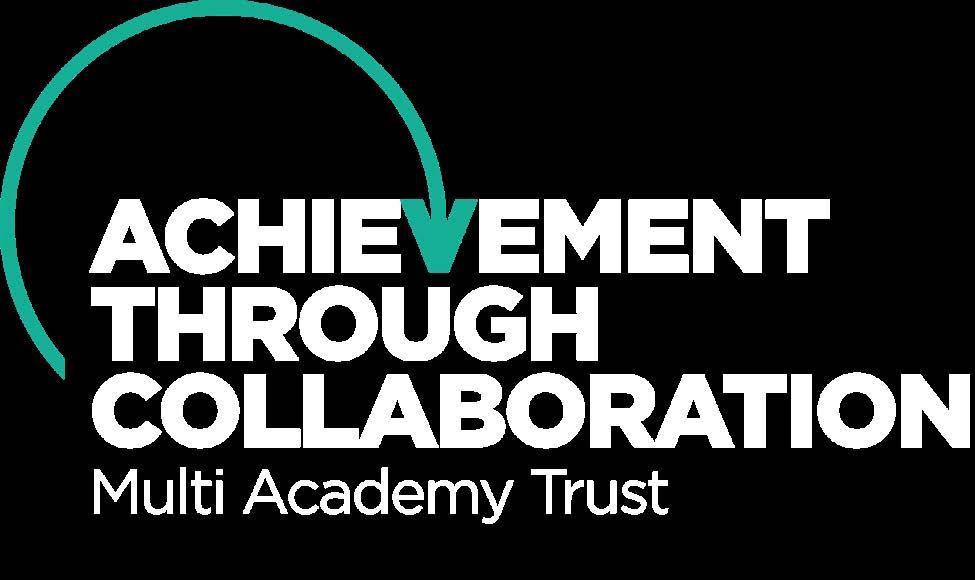School Improvement Operating Model
The school improvement operating model represents the key areas of focus for any improvement or development work that is undertaken within our Trust schools. We believe that getting these key areas “right” with our schools and their leaders accelerates school improvement and provides targeted and meaningful support when required.

4
Leadership:
Leaders guide our schools to success, making education a meaningful and powerful experience for both staff and students. Leaders within our Trust are:
• Supported and developed through Trust leadership programmes, leadership training and external training provided through NPQs and other awarding providers.
• Part of a leadership structure designed by their school; enabling them to best serve the needs of their school and its students.
• Invited and supported to be part of a larger leadership community across the Trust with the aim of creating a consensus discourse and alignment of systems across our schools.
• Part of Trust wide actions and conversations - Headteachers attend regular leadership board meetings to be part of strategic decision making and innovation within the organisation.
• Proactive in the development of student leadership and the role students play in leading a great school. They value highly the role that student leadership and student voice should play in school.
Practice & Coaching:
Coaching at all levels of the organisation improves practice and the role that deliberate practice and instructional coaching plays is school improvement is significant. Deliberate practice and coaching aims to:

Support practitioners and leaders at all levels to be reflective, considered and developmental in terms of their performance and practice.
Provide opportunities for staff and leaders to be on a continuous cycle of small improvement and marginal gains so that leaders and staff are committed to always getting better.
Improve outcomes for all students. The child centric approach to deliberate practice and coaching is child focused and responds directly to the identified presenting needs of our students.
Codify the practice within schools and increase consistency across organisations in terms of culture and routines and academic rigour.
Bring staff together to fully understand the aims and purpose of all decisions and actions made by the school.
5
...equipping our students with powerful, substantive and disciplinary knowledge.
Curriculum:
Despite our diverse geographical locations, the Trust still takes every opportunity to work together across the primary and secondary phases sharing best practice in curriculum planning, content, expertise and specialisms so that all of our students have access to the best possible education and knowledge.
Our intent is to provide well balanced, knowledge-led curriculums which are ambitious both in terms of the knowledge and in skills gained inside and outside of the classroom.
Whilst each school designs and implements their own curriculum in their own way to best serve the needs of their students and their contexts, they are underpinned by fundamental principles that can be found in more detail in the Trust Curriculum Guide.


We collaborate to secure excellent outcomes for all
We collaborate to secure high quality learning experiences for all
6
Essentially;
Staff work collaboratively to design curriculums, source and create the best available resources and refine approaches to the methods of delivery and instruction in each subject area.
Schools design their assessment models using the Trust guide to Assessing with Purpose, which covers a range of assessment, monitoring and tracking methods to enable leaders and teachers to respond quickly to student learning needs.

Highly inclusive curriculums are designed to ensure equitable provision for all students so that learning opportunities for all abilities and needs, including those from disadvantaged backgrounds and those with SEND, are effective.
Mechanisms for evaluating the efficacy of curriculums and the appropriateness of content are a built in feature of the curriculum models within our schools.
Careers and Aspirations curriculums are in place across all key stages.
Personal development, wellbeing and resilience curriculums are designed and offered in a way that supports the holistic development of the whole child at all key stages.
Enrichment activities and experiences build student agency and develop cultural capital, fulfilling the social justice agenda of our organisations.
7
Within the Primary Curriculum;
• A systematic synthetic phonics approach is the foundation to early reading and writing in all our primary schools.
• Reading curriculums, utilising whole school reading strategies, support the development of reading skills and a love of reading for all students.
• Active retrieval practices and a mastery approach provide opportunities to deepen learning and revisit core knowledge and concepts
• The development of wider skills and knowledge through a range of exciting provision and activities enhance learning experiences and opportunities.

• Enhancement days celebrate key and important learning connected to bigger world issues and global narratives e.g world book day, mental health week.
• Digital curriculum and passports support student development of digital literacy and digital competencies.
Within the Secondary Curriculum;
• Reading and Literacy curriculums (including the addition of a synthetic phonic approach where appropriate) are delivered to ensure reading proficiency and access to the KS3 curriculum for all learners.
• EBacc is a core indicator of an ambitious curriculum for all learners at secondary school.
• Personal development curriculums and careers provision, connected across faculties and subjects, builds aspirations and readiness for next steps.
• A broad range of options and specialisation pathways into Key Stage 4 provides learners with the opportunity to access a range of subjects including academic and creative elements.
• Additionality through learning to learn, metacognitive processing and scholastic approaches, supports students to be life long, independent learners well equipped to be organised, motivated and resilient.
8
Teaching and Learning:
The Trust recognises that teacher expertise and high quality teaching is the single most important “in school” factor for securing excellent outcomes and learning experiences for all of our students. We help ensure that all of our staff get the right support, at the right time, in the right way to allow them to develop as excellent practitioners. As a Trust we are developing a common language around teaching and learning through continued collaboration and best practice sharing, this allows for better and more effective communication between member schools and a shared sense of belonging.
To ensure high quality teaching and learning schools offer;
• Regular personalised support
• Access to high quality CPD in line with securing the priorities of each school, provided by internal and external providers and educational leaders
We collaborate to develop approaches to personalisation, equity and agency
• Access to CPD dashboards that house a range of excellent training materials, resources and information to enhance their practice and professional understanding. For lots of our schools this also includes teacher toolkits and shared resources and approaches.
• Access to a range of Trust wide subject training to enhance the work that they do in their own schools.
• Bespoke ‘Every lesson, Every day’ charter that codifies the expectations around high quality teaching and learning in each of the member schools in the Trust.

• Access to a trajectory that outlines the development of classroom and practitioner expertise - this is supported by instructional coaching, deliberate practice and personalised learning for staff.
• Opportunities for the sharing of best practice through Trust INSET days and upcoming teachmeets facilitate a growing understanding of what works for students.
9
Achievement & Improvement:
The achievement and improvement cycle is a strong thread which helps unite and connect our member schools and serves all aspects of our mission to achieve, belong and collaborate. The monitoring, data tracking and quality assurance systems inform all next steps for school improvement across the Trust providing parity and clarity as we work together for educational advancement. The achievement and improvement cycles identify accountability threads from individual teachers to Trust leaders and help ensure that we are working towards identified, agreed and measurable goals.
School Action Model
As a Trust we use the step by step school action model to ensure robust, strategic improvement cycles in which loops are always closed and improvement is effectively measured.
10
Methodology;
Step 1: Identify
School and Trust leaders work together to identify highest leverage actions for school improvement using a variety of evaluation and reflection tools, data tracking and quality assurance methodologies.
Step 2: Design
Once priorities and highest leverage action for improvement are identified and agreed, leaders from schools and the Trust work collaboratively to design an implementation plan or learning set with clear KPIs and measurable success criteria.
Step 3: Train
This is an opportunity to provide any necessary training or support, drawing from our network of expertise. The aim is to ensure that all staff involved in the improvement cycle have the knowledge, skills and understanding to fulfil the expectations and actions of the plans designed.
Step 4: Practice and Coach
This window for practice and coaching allows actions to be refined and reflected on in the moment. The dynamic assessment of progress towards intended outcomes and measures is a transformational aspect of the way school improvement works leading to greater longevity of impact and sustained change.
Step 5: Measure
School and Trust leaders measure progress against intended outcomes and conduct close evaluations of the actions, approaches and impact of the improvements or innovations made. This process of measuring and review informs school SEFs, improvement plans and MAT summary evaluations and reports. It also forms core information for reports to governors and trustees and continues the threads of accountability at all levels.
Step 6: Move
School and Trust leaders make a shared and informed decision to either move to a new cycle or amend and adapt the current approach to best secure the intended outcomes from the previous cycle.

11
Culture and Routines:
We understand, and research indicates that, behaviour that is not conducive to learning is one of the biggest barriers for success in schools. We support our school teachers and leaders to secure excellent behaviour and attitudes through consistent, transparent culture and routines and clearly defined systems for dealing with behaviour that can be detrimental to learning, wellbeing and outcomes for individuals and cohorts. To support this:
• Primary and Secondary behaviour policies are designed appropriately for students and context and serve to educate and help children of all ages understand the value and impact of good behaviour and positive decision making.
• Behaviour policies are regularly evaluated and reviewed for efficacy and impact at a school and Trust level.
• Personal development curriculums, including RSE and PSHE, support students to understand the value of keeping themselves and others safe as well as treating others with respect, tolerance and dignity.
• Schools use effective behaviour monitoring systems to ensure high standards and expectations for behaviour and attitudes are maintained both in class and during social times.
• Schools have clear pastoral support systems.
• School and Trust systems support; daily tracking and monitoring of attendance and punctuality, interventions/support for behaviour, alternative provision and bespoke support.
• The Culture and Routines Trajectory helps schools identify non-negotiables for behaviour and deliberate practice can then be used to embed behaviour routines and practices for students and staff.

12
Quality Assurance at all Levels
Quality assurance processes and systems have been designed in close collaboration with school leaders. QA systems across the Trust and schools are connected to the vision for the quality of education we offer.

• QA provides clear systemic evidence trails and accountability threads so schools, leaders and Trust members are able to communicate with clarity and accuracy what’s happening in each school.
• In-School QA and data collection: schools design their own QA systems to analyse efficacy of subject areas, phases, the performance of key cohorts of students and the fidelity between curriculum plans and systems and the associated practice.
• School-to-school QA, standardisation and moderation: school leaders, alongside Trust leaders, work together for school-to-school QA in a supportive and developmental way that facilitates the sharing of best practice and provides opportunities for collaboration and innovation.
• Trust QA, monitoring and evaluation: Trust executives participate in agreed QA processes within each of our member schools as part of the school QA cycle, enabling the Trust to assess its effectiveness against external accountability frameworks.
13

14
15

AtC Trust Suite 13 The Beehive Lions Drive, Shadsworth Business Park Blackburn, BB1 2QS Telephone: 01254 686178

















